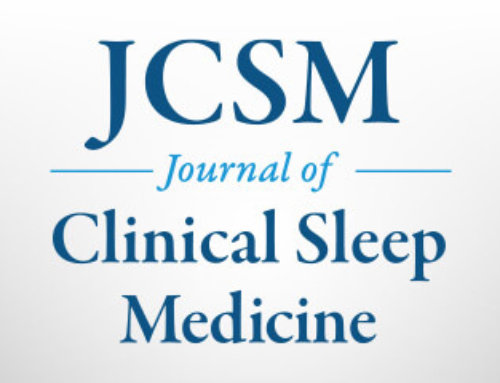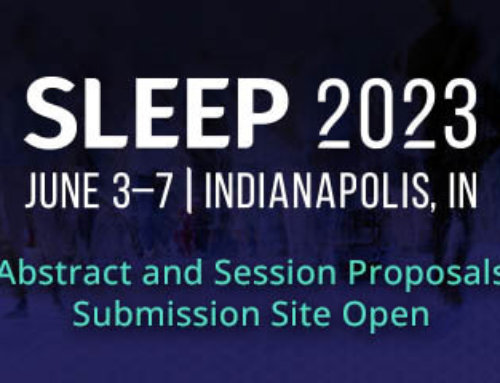WESTCHESTER, Ill.– Practice parameters published in the December 1 issue of the journal SLEEP serve as both an update of previous practice parameters for the therapy of narcolepsy and as the first practice parameters to address treatment of other hypersomnias of central origin, including idiopathic hypersomnia, recurrent hypersomnia and hypersomnia due to medical condition.
The practice parameters were developed by the American Academy of Sleep Medicine’s (AASM) Standards of Practice Committee, who appointed a Task Force of content experts to perform a comprehensive review of the medical literature regarding treatment of hypersomnias of central origin, and to grade the strength of evidence for each citation.
The following are highlights of recommendations for the treatment of narcolepsy and other hypersomnias of central origin:
Standards (generally accepted patient-care strategies that reflect a high degree of clinical certainty):
- An accurate diagnosis of a specific hypersomnia disorder of central origin should be established. The evaluation should include a thorough examination of other possible contributing causes of excessive daytime sleepiness.
- Treatment objectives should include control of sleepiness and other sleep related symptoms when present.
- Modafinil is effective for treatment of daytime sleepiness due to narcolepsy.
- Sodium oxybate is effective for treatment of cataplexy, daytime sleepiness, and disrupted sleep due to narcolepsy.
- Tricyclic antidepressants, selective serotonin reuptake inhibitors, venlafaxine, and reboxetine may be effective treatment for narcolepsy.
- Regular follow-up of patients with hypersomnia of central origin is necessary to monitor response to treatment, to respond to potential side effects of medications, and to enhance the patient’s adaptation to the disorder.
Guidelines (patient-care strategies that reflect a moderate degree of clinical certainty):
- Amphetamine, methamphetamine, dextroamphetamine, and methylphenidate are effective for treatment of daytime sleepiness due to narcolepsy.
- Scheduled naps can be beneficial to combat sleepiness but seldom suffice as primary therapy for narcolepsy.
- Tricyclic antidepressants, selective serotonin reuptake inhibitors, venlafaxine and reboxetine may be effective treatment for cataplexy.
- Modafinil may be effective for treatment of daytime sleepiness due to multiple sclerosis.
Options (patient-care strategies that reflect uncertain clinical use):
- Sodium oxybate, tricyclic antidepressants, selective serotonin reuptake inhibitors and venlafaxine may be effective for treatment of hypnagogic hallucinations and sleep paralysis.
- Selegiline may be an effective treatment for cataplexy and daytime sleepiness.
- Ritanserin may be effective treatment of daytime sleepiness due to narcolepsy.
- Modafinil may be effective for treatment of daytime sleepiness due to idiopathic hypersomnia and Parkinson disease.
- Modafinil, methylphenidate may be effective for treatment of daytime sleepiness due to myotonic dystrophy.
“Since the publication of the 2000 paper, when the Standards of Practice Committee published a combined review and updated practice parameters on treatment of narcolepsy that included therapies other than stimulants, there have been significant advances concerning the treatment of hypersomnia to justify a practice parameters update,” said Timothy I. Morgenthaler, MD, of the Mayo Clinic in Rochester, Minn., one of the committee members. “The AASM expects these guidelines to have an impact on professional behavior, patient outcomes and, possibly, health care costs.”
Excessive daytime sleepiness has a significant detrimental impact on psychological, social and vocational function and personal safety, thus adversely affecting quality of life. Sleepiness is an important public health issue among individuals who work in fields where the lack of attention can result in injury to self or others such as transportation and health care.
Narcolepsy is a sleep disorder that causes people to fall asleep uncontrollably during the day. It also includes features of dreaming that occur while awake. Other common symptoms include sleep paralysis, hallucinations and cataplexy. About one out of every 2,000 people is known to have narcolepsy. The chance that you have narcolepsy is higher when a relative also has it. It affects the same number of men and women.
Hypersomnia is characterized by recurrent episodes of excessive daytime sleepiness or prolonged nighttime sleep. Different from feeling tired due to lack of or interrupted sleep at night, persons with hypersomnia are compelled to nap repeatedly during the day, often at inappropriate times such as at work, during a meal, or in conversation. These daytime naps usually provide no relief from symptoms. Patients often have difficulty waking from a long sleep, and may feel disoriented. Other symptoms may include anxiety, increased irritation, decreased energy, restlessness, slow thinking, slow speech, loss of appetite, hallucinations, and memory difficulty. Some patients lose the ability to function in family, social, occupational, or other settings.
On average, most adults need seven to eight hours of sleep each night to feel alert and well-rested.
The AASM offers the following tips on how to get a good night’s sleep:
- Follow a consistent bedtime routine.
- Establish a relaxing setting at bedtime.
- Get a full night’s sleep every night.
- Do not go to bed hungry, but don’t eat a big meal before bedtime either.
- Avoid foods or drinks that contain caffeine, as well as any medicine that has a stimulant, prior to bedtime.
- Avoid any rigorous exercise within six hours of your bedtime.
- Make your bedroom quiet, dark and a little bit cool.
- Get up at the same time every morning.
Those who believe they have a sleep disorder should be aware that many treatment options are available. The AASM accredits full-service sleep centers and sleep-related breathing disorder laboratories that offer diagnosis, treatment, management and long-term care solutions. To locate an AASM-accredited sleep facility, please visit www.SleepCenters.org.
SLEEP is the official journal of the Associated Professional Sleep Societies, LLC, a joint venture of the AASM and the Sleep Research Society.
More information about narcolepsy is available from the AASM at https://www.SleepEducation.com/Disorder.aspx?id=5.
SleepEducation.com, a patient education Web site created by the AASM, provides information about various sleep disorders, the forms of treatment available, recent news on the topic of sleep, sleep studies that have been conducted and a listing of sleep facilities.
For a copy of this article, entitled, “Practice Parameters for the Treatment of Narcolepsy and other Hypersomnias of Central Origin," or to arrange an interview with an AASM spokesperson regarding this study, please contact Jim Arcuri, public relations coordinator, at (708) 492-0930, ext. 9317, or jarcuri@aasm.org.
# # #








